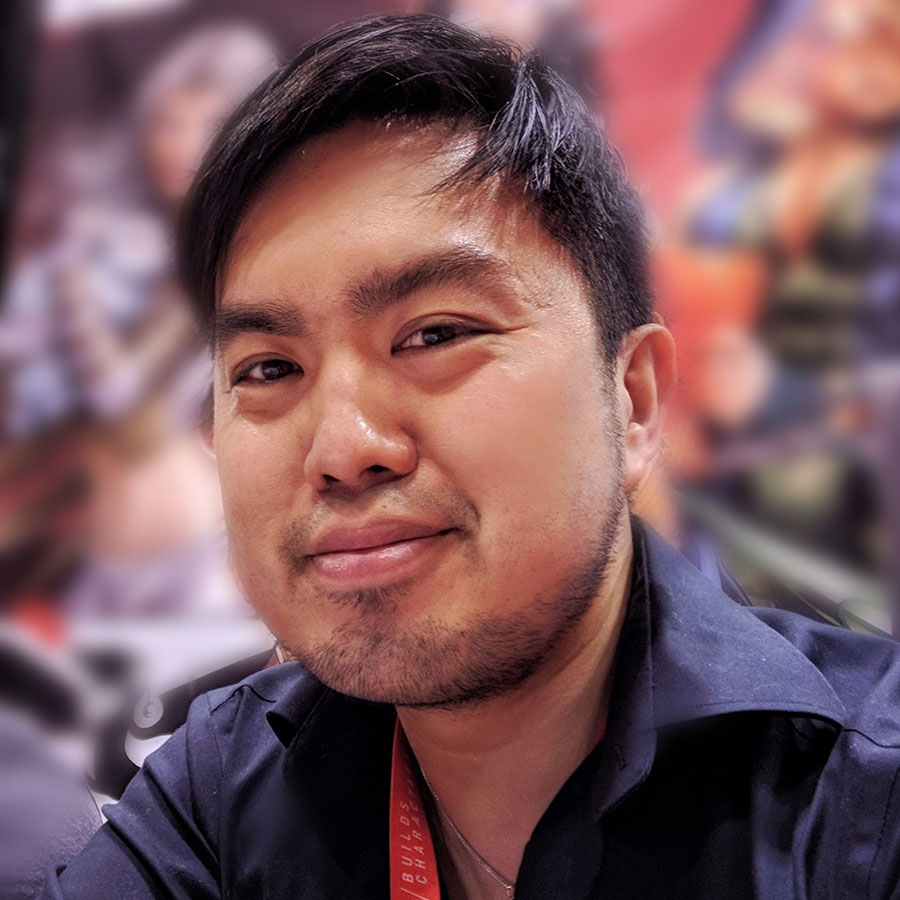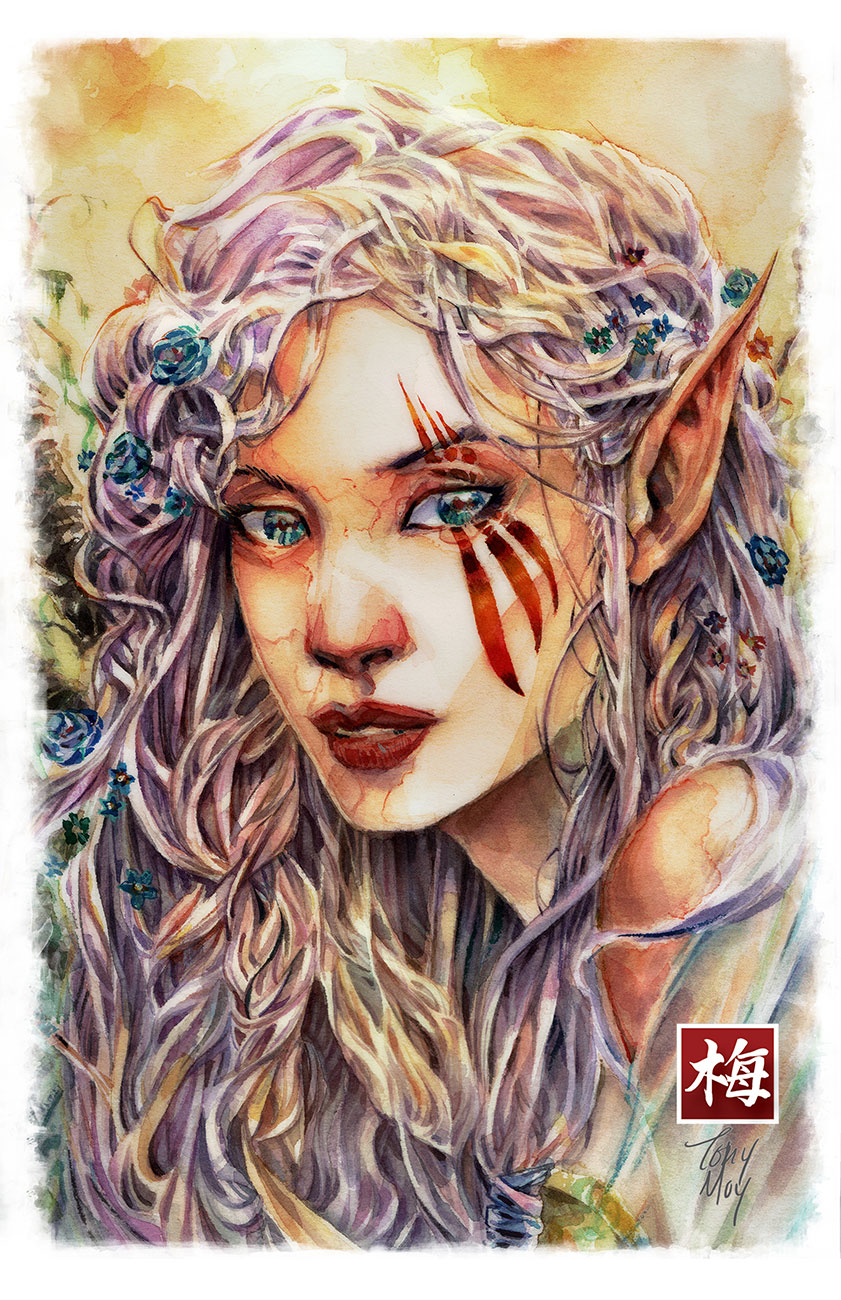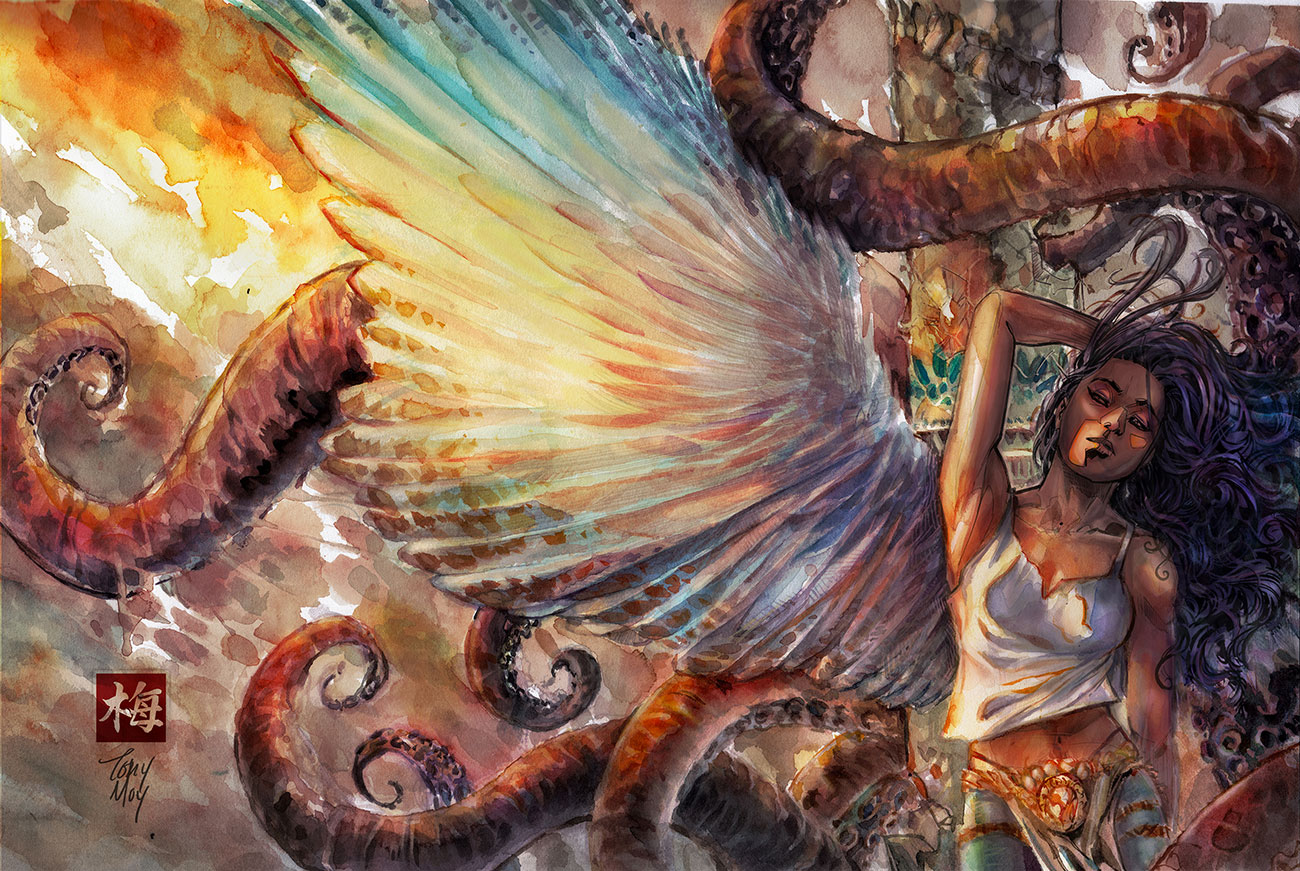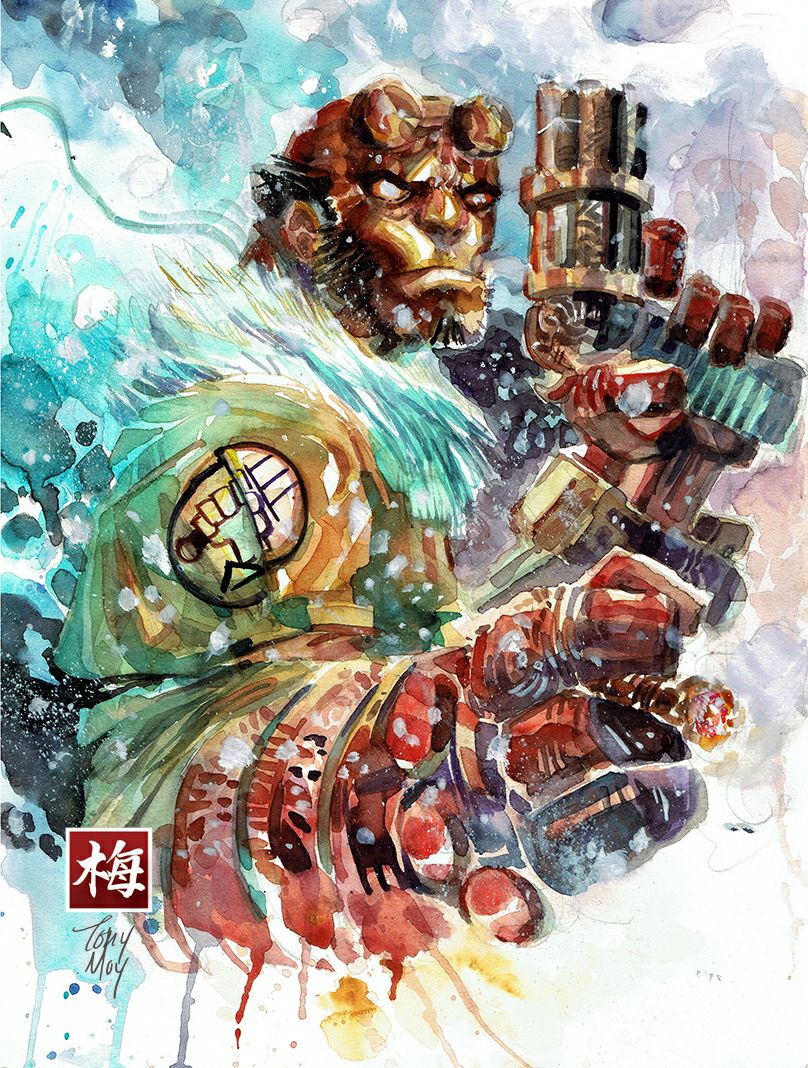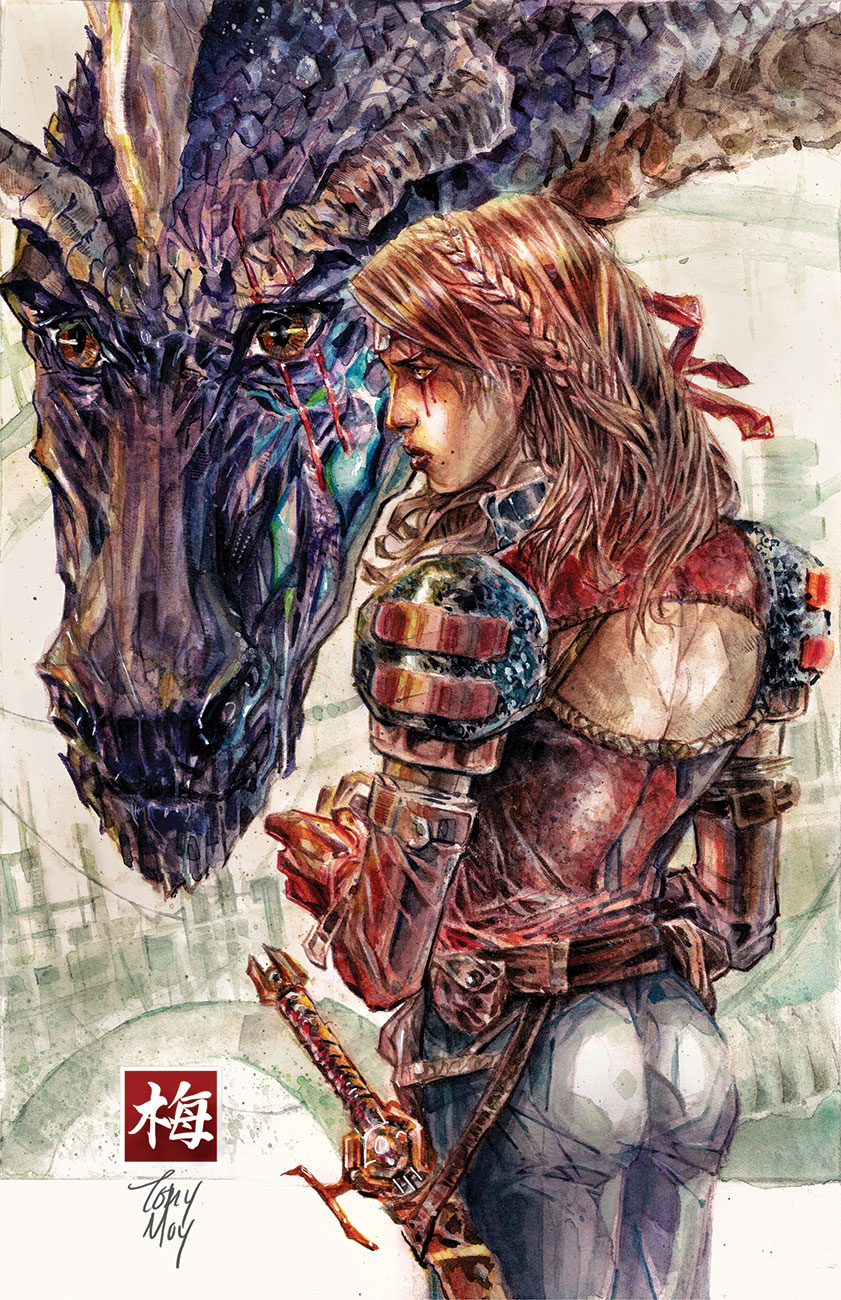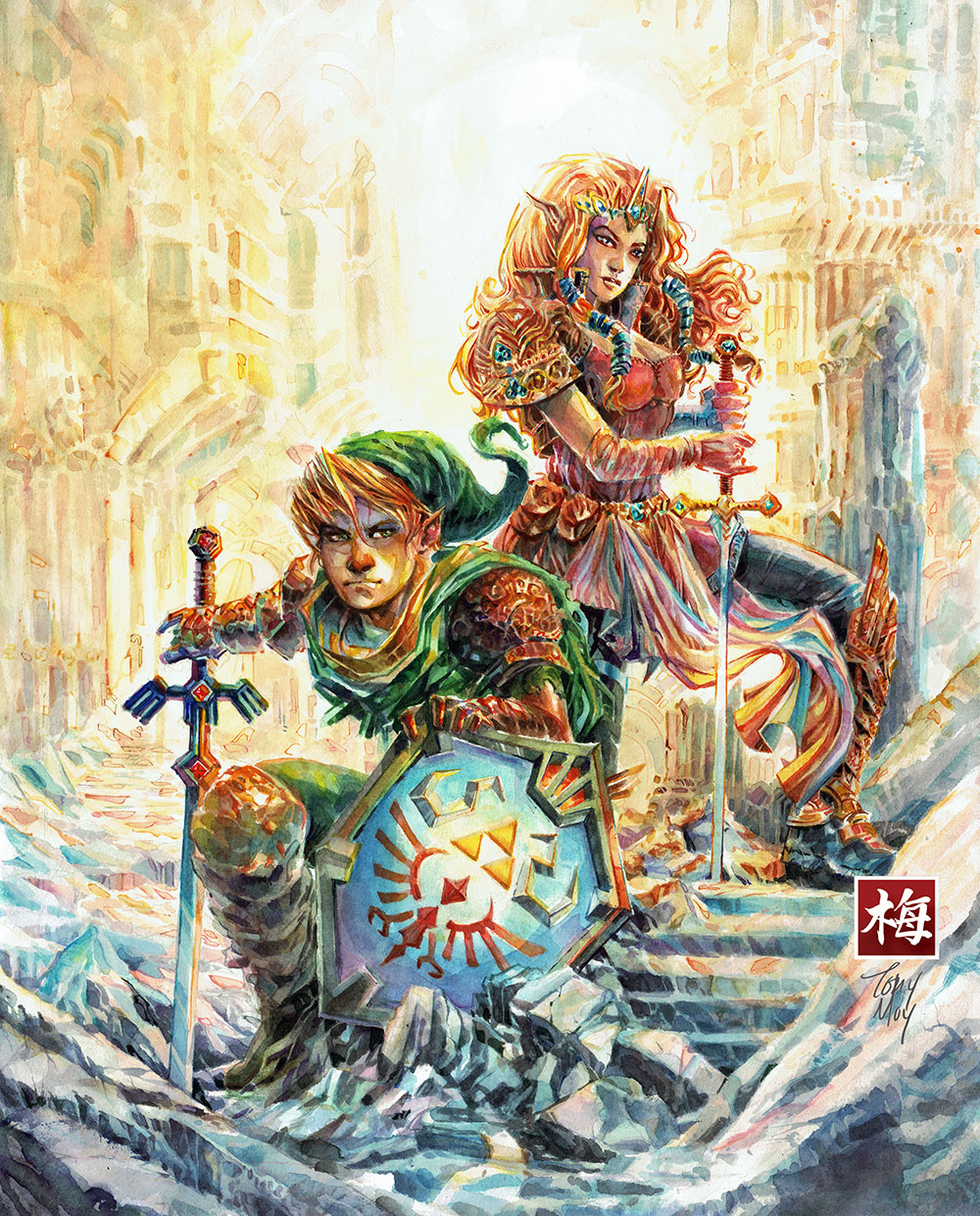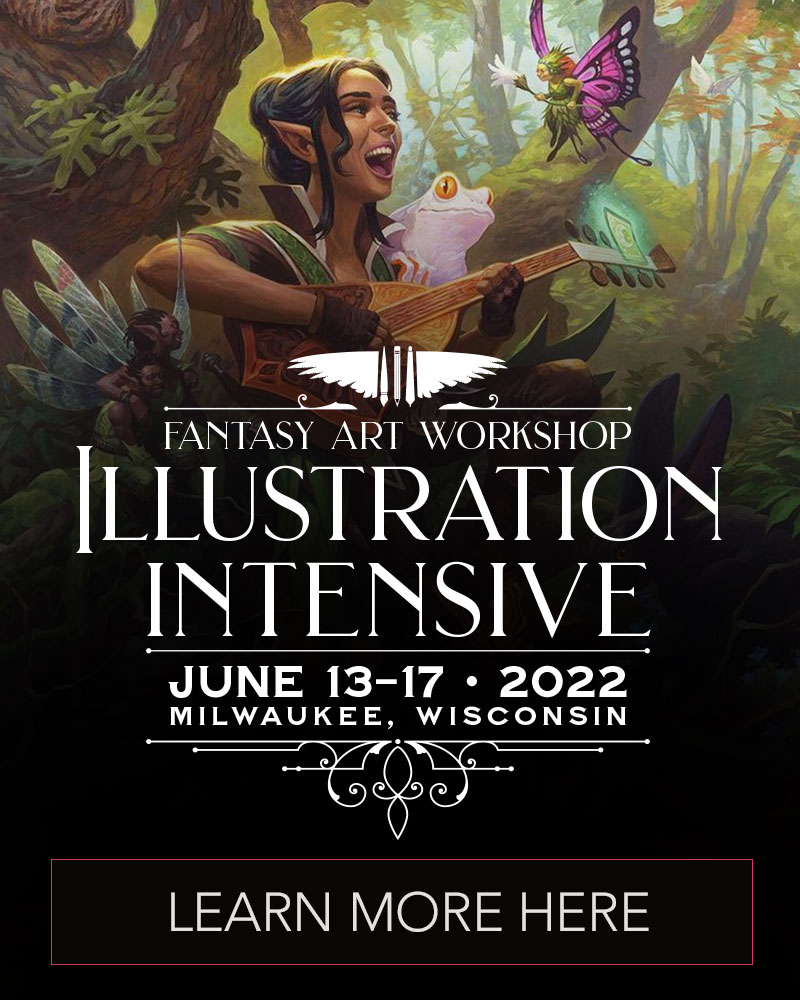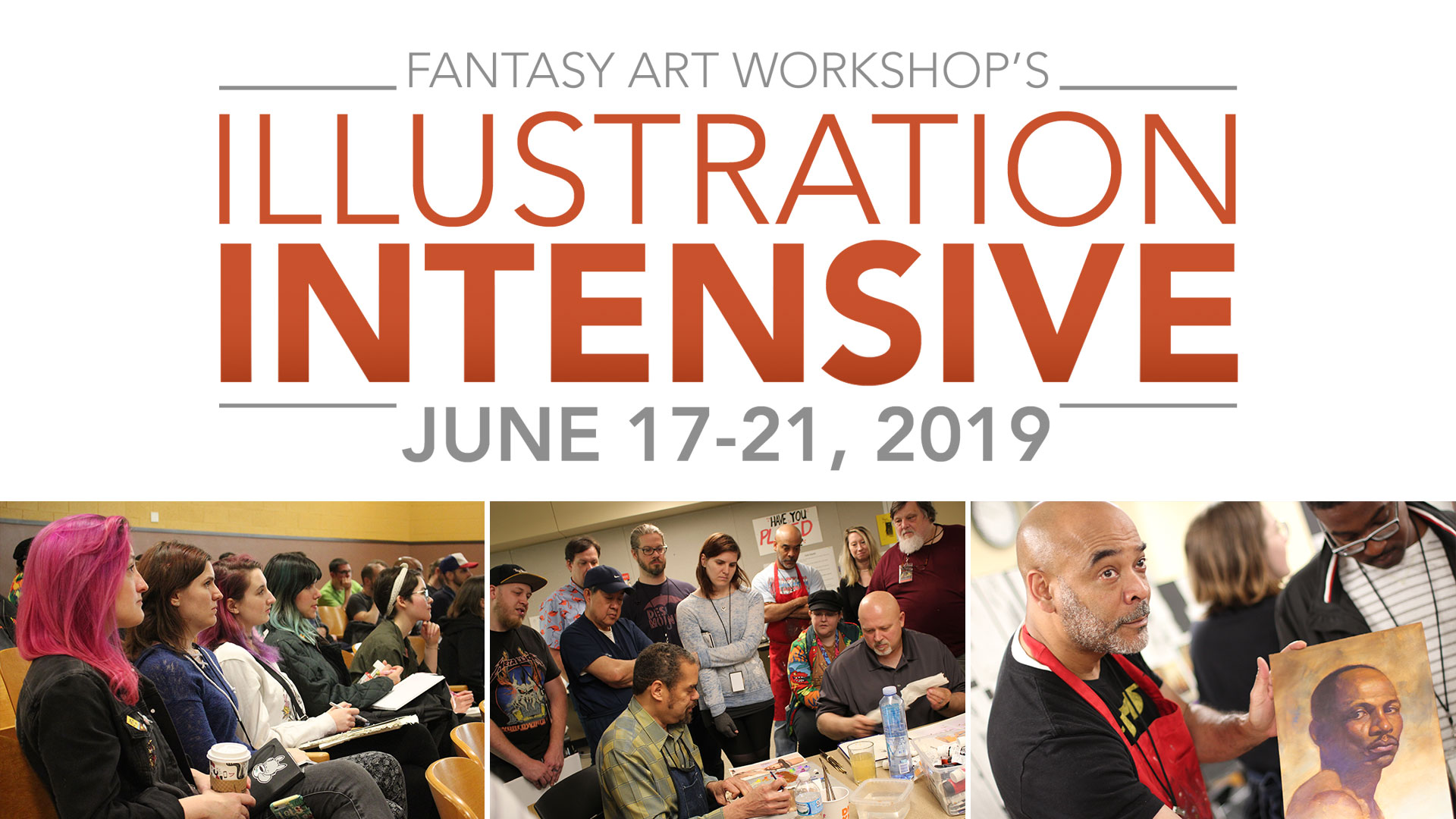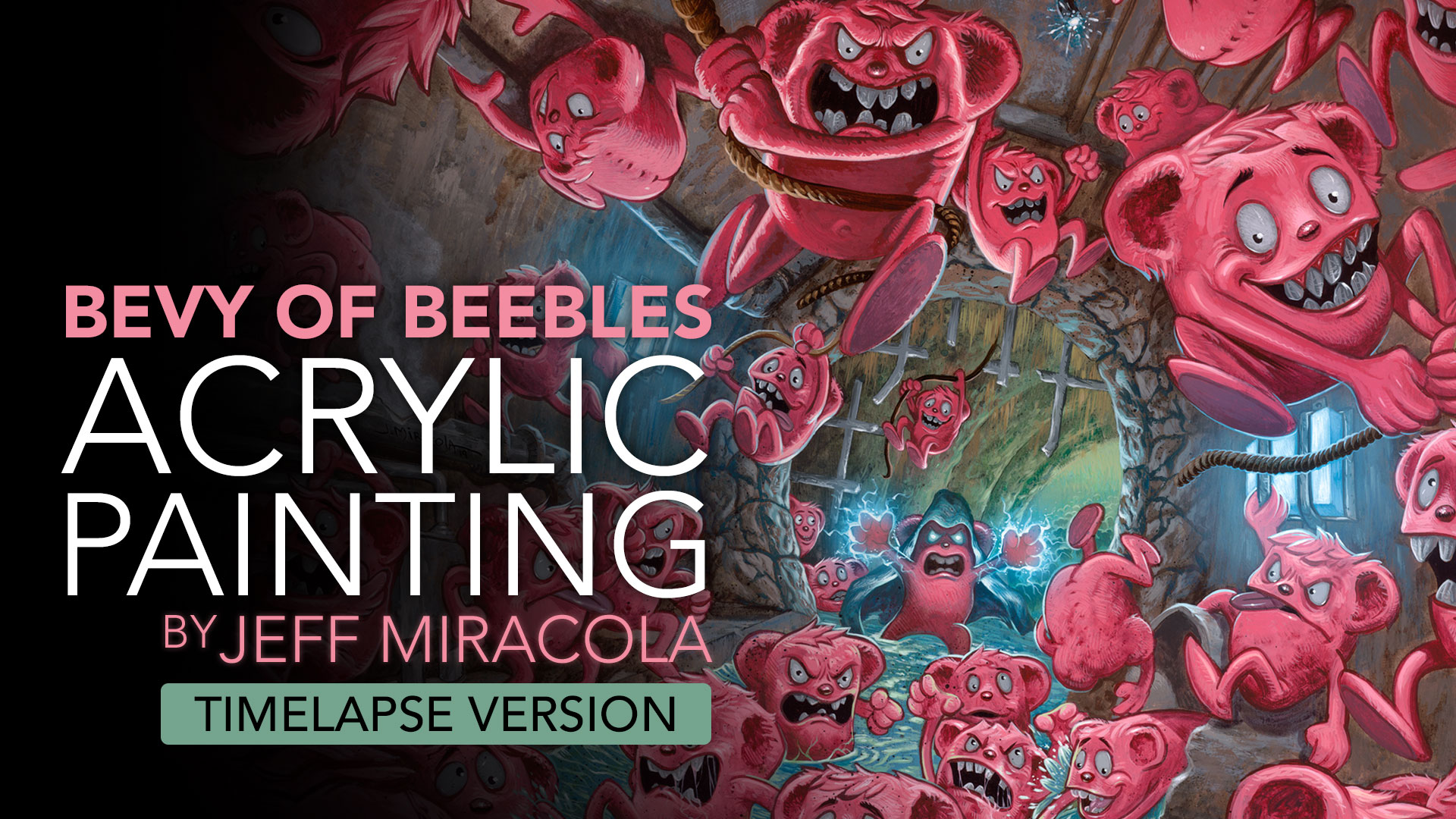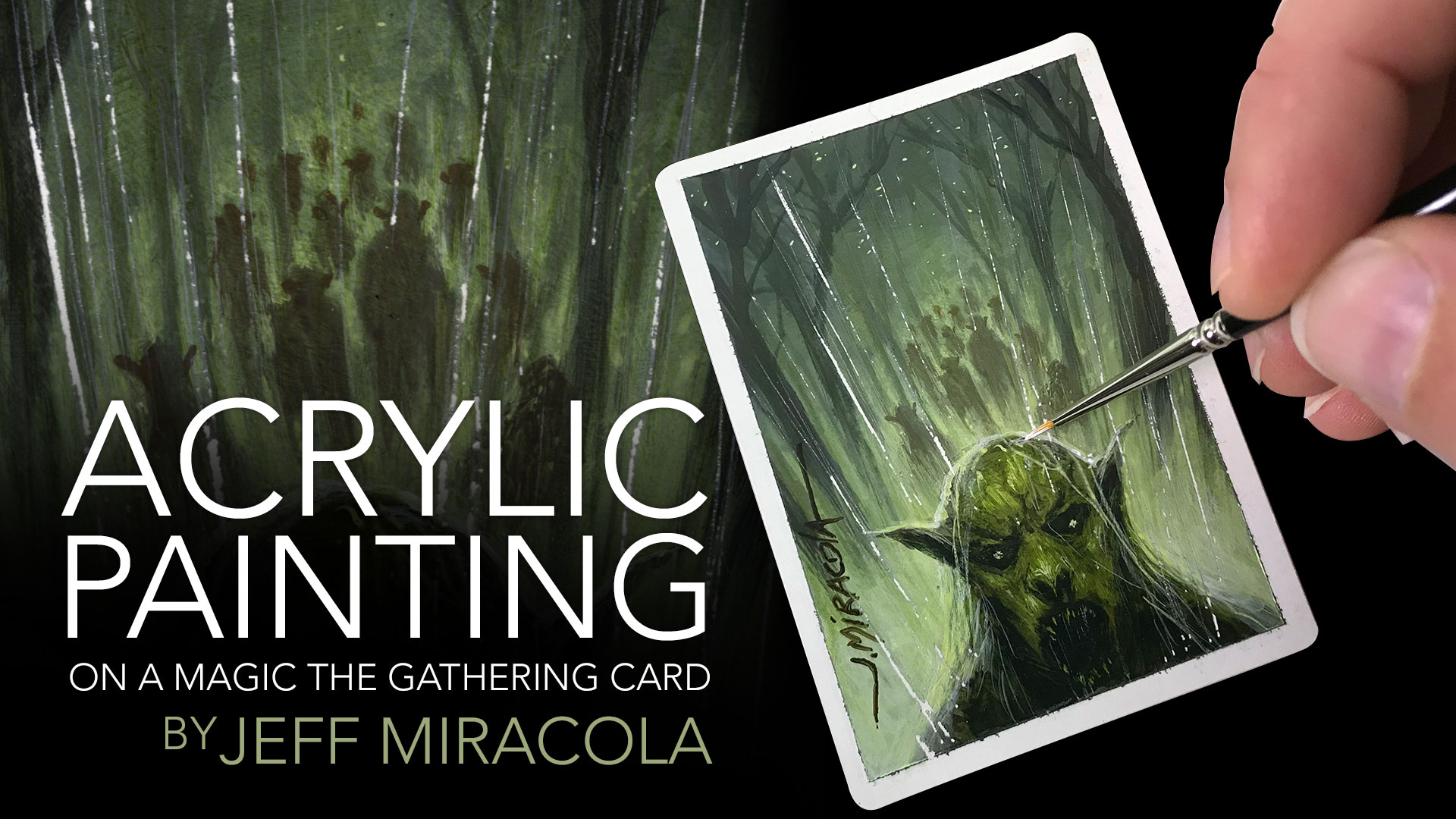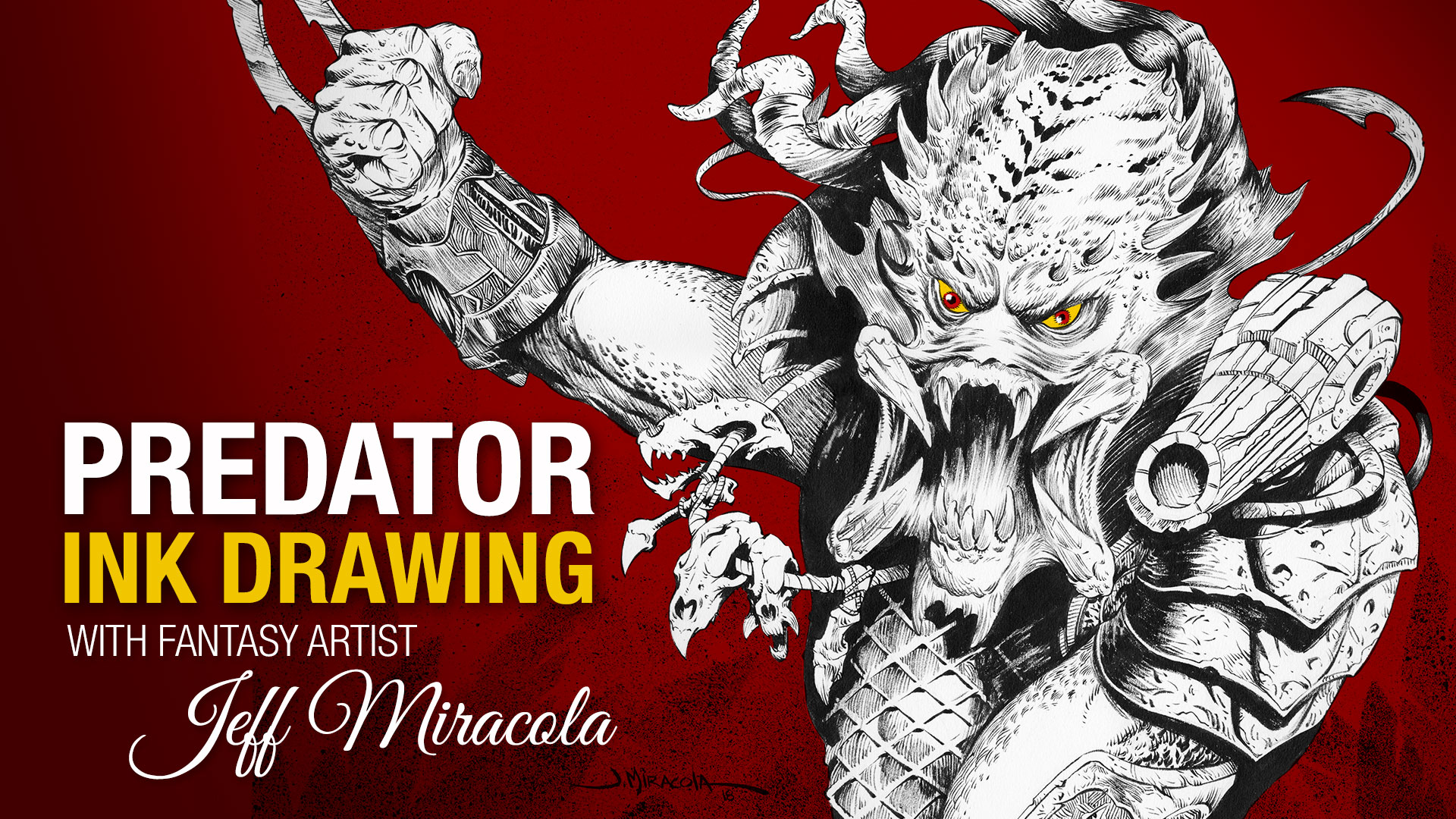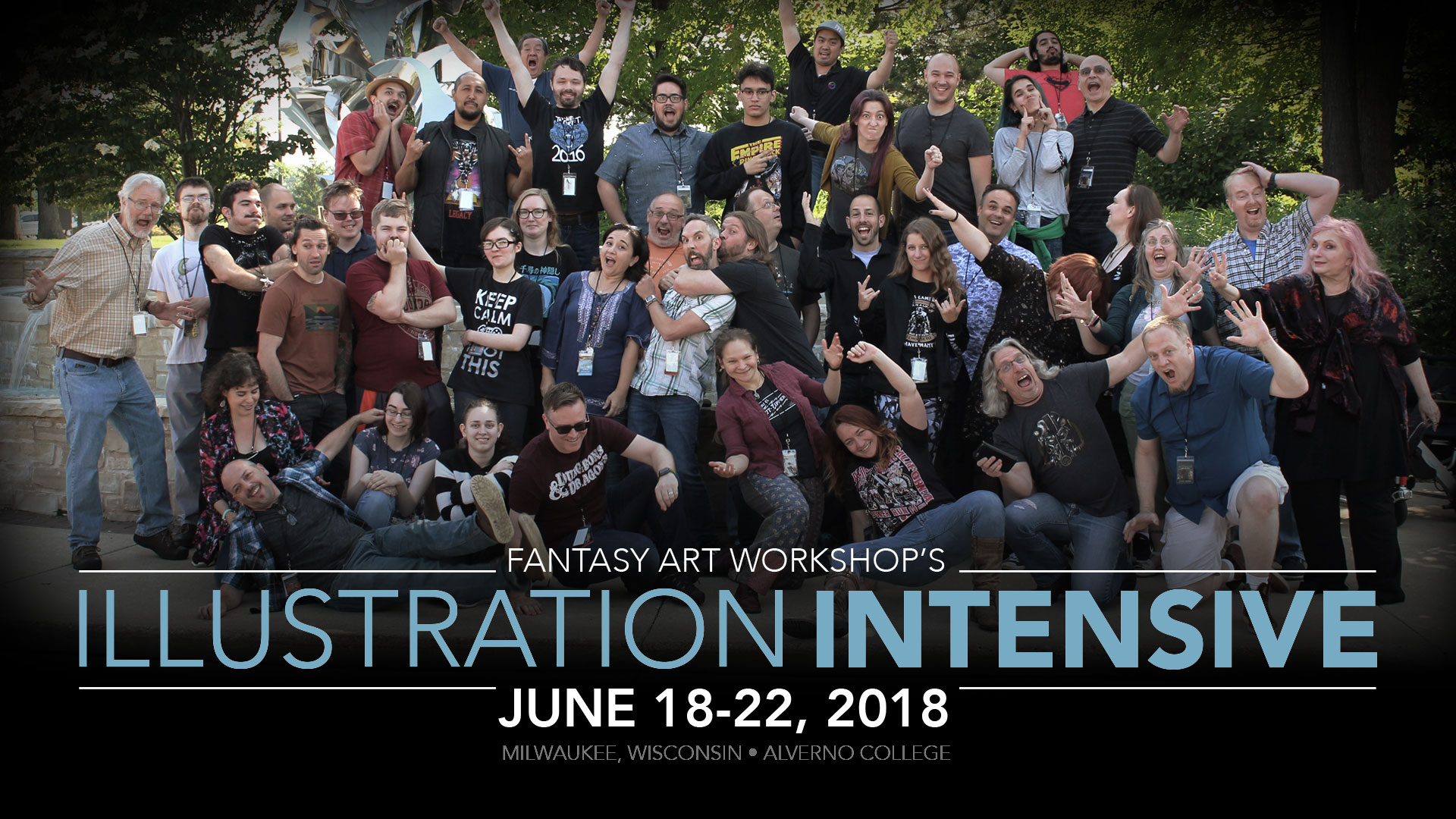You have such a unique watercolor style that is all your own. Without giving away all your secrets, can you tell us more about your process?
In all honesty, I approached watercolor not knowing anything about it except:
- Step 1 Wet brush
- Step 2 Wet pigment
- Step 3 Paint paper
- Step 4 Repeat
It wasn’t until a year or two later that I would hear how difficult a medium watercolor could be. With all the YouTube videos that I watched to learn watercolor, I never learned, or rather, I was never told what watercolor couldn’t do. I never learned its limitations, so I pushed it whenever I could.
I would get inspired by other artists’ artwork, whether they were digital or acrylic or whatever. I would wonder how I could accomplish that with watercolor. Over the years, any developing style I might have had was mostly a result of problem solving in the best way I knew with the skills I happened to have.
For a long time prior, I was a comic illustrator, so I focused on spotting blacks [areas filled with black ink], cast shadows, dark values, and line weight — basically, the tools and techniques that would bring a pen-and-ink art piece to life. The revelation that happened as I started to fall deeper down the watercolor rabbit hole was that I would have to turn my world upside down. Now with watercolor, I had to consider the light as well as the shadow. Dark shadows became bright highlights. Core shadows became reflected lights. My time drawing and inking turned out to help and influence me quite a bit as I began unlocking this world of color and light. To me, the battle between the hue of the shadows and the colors of the light on any piece is what I’m constantly trying to resolve as I paint.
You’ve taught design and illustration at the School of the Art Institute in Chicago for more than 10 years. What is it about teaching that you enjoy so much?
I believe that anyone can learn nearly anything. It all depends on the manner in which we are relayed information and the reinforcement that we receive along the way. The best part about teaching is being able to see when someone adapts and changes how they process information to arrive at a unique solution. Teaching no longer is about memorizing and learning facts. With Google at our fingertips and phones in our pocket, those specific details are a couple clicks away. To me, the teaching and student paradigm is about providing new ways to approach, break down, and solve problems. And there is something magical when you see those light bulbs turn on and new roads are illuminated for people.
You’re a guest artist at many conventions. What advice can you give to artists looking to exhibit at shows to reach fans and sell art?
Making a sale is not my first goal at a convention. A sale is just the result of making a connection with a fan. First thing I try to do at a convention or show is to interact with the people who gravitate towards my work and try to be as honestly me as I can be. Whether it’s for a couple seconds or a few more minutes, I just try to establish a rapport. If I’ve done all the hard prep work well in the studio, I’ve already taken the first steps towards establishing some sort of connection. If they stop by and are already interested in my art, the hard part is already done.
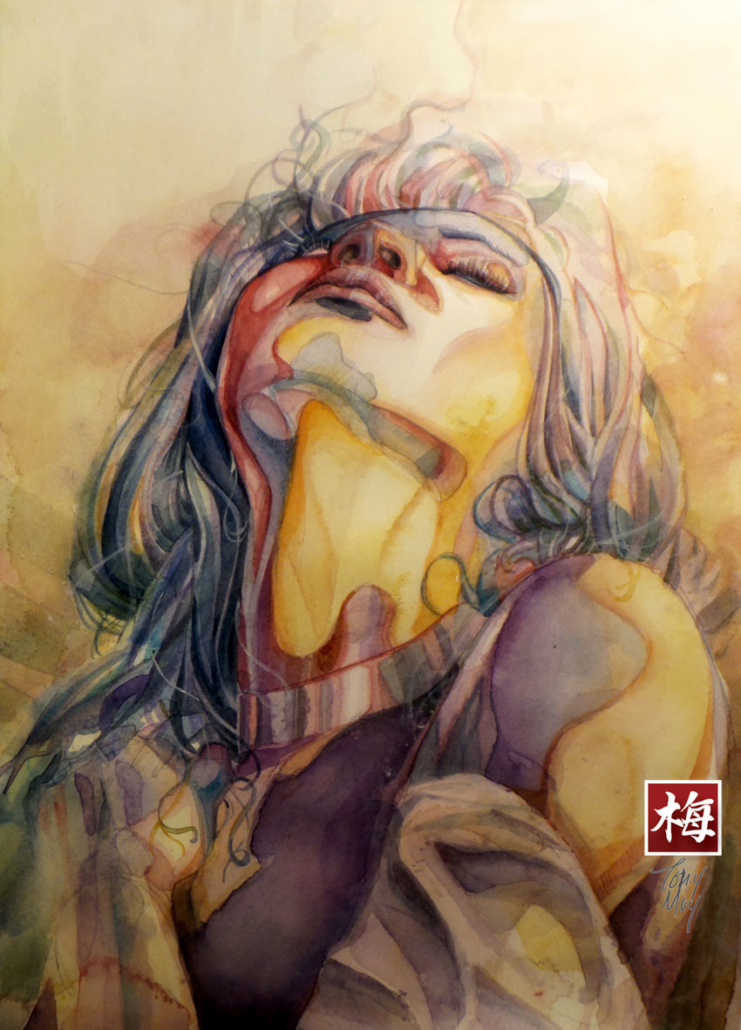 What mentors, books, or philosophy has helped you along your artistic journey?
What mentors, books, or philosophy has helped you along your artistic journey?
What helps me keep peace of mind on this artistic journey is realizing that this is not a race. There is no one keeping time. In a race, there’s always someone faster than you, stronger than you, in front of you, or behind you. If I constantly worried about everyone else or where I should be or where I am on my timetable, I would be under so much stress. All of that doesn’t matter as much as you might think it does.
Another philosophy I adhere to is the goal to be the person you needed when you were younger. For the most part, I am a self-taught artist, but that doesn’t mean that I wouldn’t have liked to have received additional guidance, encouragement, or advice along the way. Whether it’s teaching students, talking to artists, or interacting with people in general, I always try to put myself in their shoes and try being considerate of their journey.
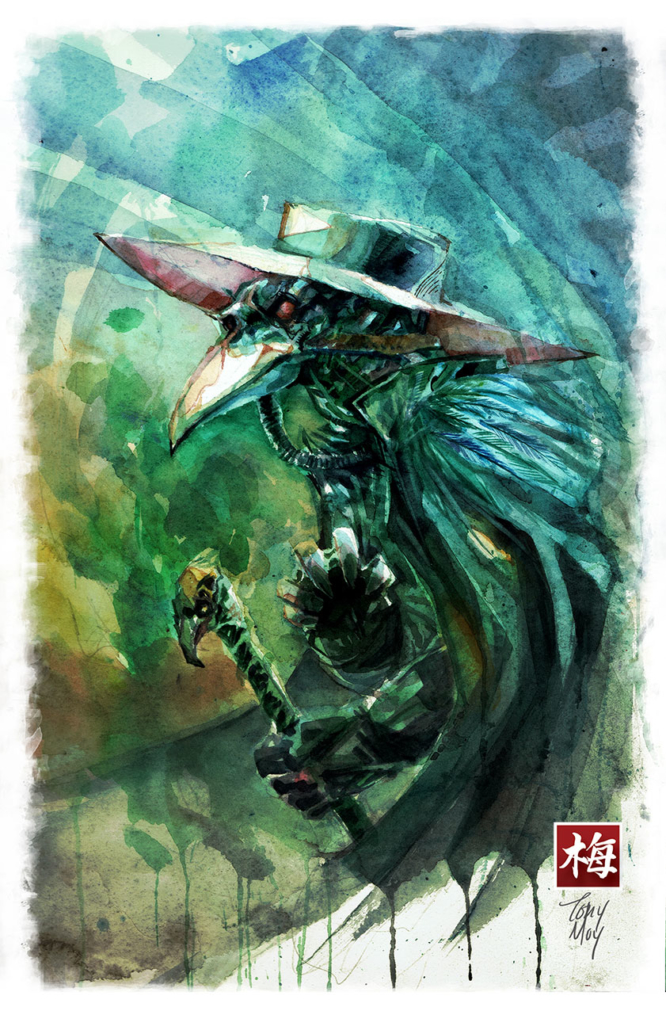
Do you have any current or upcoming projects that you can tell us about?
I’m working on a webcomic temporarily called “Chronicles of Yorn.” It will be a free, monthly webcomic, watercolor/mixed media, journeying through a magical, fantasy/sci-fi world. I’ve always loved all the rich textures and layers of fantasy and science. This will be my own personal endeavor as I try my hand at writing and creating a world that’s been following me since I started drawing as a young kid.
About Tony
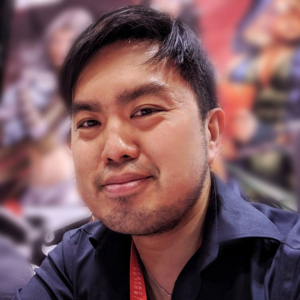 Tony Moy is a mixed media artist who focuses on watercolor and gouache. He has published art in books including X-files, Dungeons and Dragons, Tome I & II, and Memory Collectors among others. In addition, Tony has over 10 years of teaching experience and currently teaches illustration and design at the School of the Art Institute. His inspiration comes from studying traditional and classic watercolorists combined with the modern influences of pop culture comics, anime, and fantasy. Tony lives in downtown Chicago.
Tony Moy is a mixed media artist who focuses on watercolor and gouache. He has published art in books including X-files, Dungeons and Dragons, Tome I & II, and Memory Collectors among others. In addition, Tony has over 10 years of teaching experience and currently teaches illustration and design at the School of the Art Institute. His inspiration comes from studying traditional and classic watercolorists combined with the modern influences of pop culture comics, anime, and fantasy. Tony lives in downtown Chicago.


